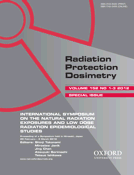
RADIATION PROTECTION DOSIMETRY
Scope & Guideline
Exploring the forefront of radiation protection and health physics.
Introduction
Aims and Scopes
- Occupational Radiation Exposure Assessment:
Research focusing on the assessment and management of radiation exposure among medical and industrial workers, including studies on dosimetry techniques and exposure monitoring. - Radiation Shielding Technologies:
Investigations into new materials and methods for effective radiation shielding in various settings, including medical imaging and nuclear facilities. - Radiological Impact Studies:
Research assessing the environmental and health impacts of natural and artificial radiation sources, including studies on soil and water contamination. - Innovative Dosimetry Techniques:
Exploration of advanced dosimetry methods, including thermoluminescence, optically stimulated luminescence, and Monte Carlo simulations for accurate radiation dose measurements. - Patient Radiation Protection:
Studies aimed at optimizing radiation doses in diagnostic and therapeutic procedures, with a focus on pediatric and vulnerable populations. - Regulatory Standards and Guidelines:
Research that informs the development of national and international standards for radiation protection and dosimetry practices. - Machine Learning and AI in Dosimetry:
Application of machine learning and artificial intelligence techniques to enhance radiation dose assessment and prediction in various medical imaging modalities.
Trending and Emerging
- Integration of AI and Machine Learning:
A significant increase in research employing AI and machine learning techniques for predicting radiation doses and optimizing imaging protocols has emerged, highlighting a trend towards data-driven approaches. - Focus on Pediatric and Vulnerable Populations:
There is a growing trend in studies aimed at understanding and minimizing radiation exposure risks specifically for children and vulnerable populations during medical procedures. - Advanced Imaging Techniques and Dosimetry:
Research is increasingly focusing on optimizing dosimetry for advanced imaging modalities, such as dual-energy CT and digital tomosynthesis, reflecting the evolution of imaging technology. - Environmental and Health Impact Assessments:
Emerging studies are increasingly assessing the long-term health effects of environmental radiation exposure, particularly in areas surrounding nuclear facilities or contaminated sites. - Radiation Protection in Emerging Technologies:
Research is trending towards understanding radiation protection implications in novel fields, such as space exploration and the use of wireless communication technology.
Declining or Waning
- Traditional Radiation Dose Measurement Techniques:
There has been a noticeable decline in studies solely focused on conventional dosimetry methods, as newer, more advanced techniques gain prominence. - Radon Exposure in Domestic Settings:
Research specifically targeting radon exposure in homes has decreased, possibly due to more comprehensive regulations or a shift towards broader environmental assessments. - General Radiation Safety Awareness Studies:
Fewer studies are focusing on general awareness of radiation safety among healthcare workers, as training and regulatory measures become more standardized. - Basic Research on Natural Radioactivity:
The emphasis on fundamental studies about natural radioactivity levels in various environments has waned, with more applied research taking precedence.
Similar Journals
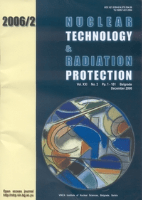
Nuclear Technology & Radiation Protection
Connecting scholars for a safer nuclear landscape.Nuclear Technology & Radiation Protection is a distinguished open-access journal published by the VINCA Institute of Nuclear Sciences, Serbia, dedicated to advancing knowledge in the fields of nuclear energy and radiation safety. Since its inception in 2002, the journal has been an essential resource for researchers, professionals, and students, offering a platform for the dissemination of high-quality research that contributes to the safe and efficient use of nuclear technology. With an impressive Q2 ranking in both the Nuclear Energy and Engineering and Safety, Risk, Reliability and Quality categories for 2023, the journal reflects a commitment to excellence and relevance within its scope. It serves as a pivotal forum for sharing innovative findings, addressing current challenges, and contributing to the global discourse on nuclear safety and technology. The journal is indexed in Scopus, enhancing its visibility and impact in the academic community. By facilitating unrestricted access to its articles, Nuclear Technology & Radiation Protection continues to foster collaboration and engagement among scholars in the nuclear science domain.
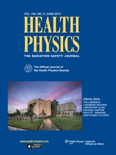
HEALTH PHYSICS
Advancing Knowledge in Radiation HealthHEALTH PHYSICS is a leading academic journal dedicated to the study and dissemination of knowledge in the fields of radiology, epidemiology, and health toxicology. Published by Lippincott Williams & Wilkins, this esteemed journal has been a cornerstone of research since its inception in 1958, and it continues to foster important discussions and advancements in the discipline. With a notable impact factor and consistently ranking in the Q2 and Q3 quartiles across various categories in 2023, HEALTH PHYSICS serves as a vital resource for scholars, practitioners, and students seeking the latest insights and methodologies in the management of radiation exposure and its health implications. While the journal does not offer open access, it remains a critical platform for peer-reviewed articles that contribute to public health and environmental safety. The journal's comprehensive scope and historical significance underscore its importance in advancing knowledge and practices within its field, making it an essential read for anyone engaged in the multidisciplinary realms of health physics.

Radiological Physics and Technology
Advancing knowledge in radiological science.Radiological Physics and Technology, published by SPRINGER JAPAN KK, is a prominent journal that serves as a crucial resource in the multidisciplinary fields of medicine and radiation sciences. With an ISSN of 1865-0333 and an E-ISSN of 1865-0341, the journal has been converging impactful research from 2008 to 2024. It holds a commendable position in academic rankings, currently classified in Q2 in Physical Therapy, Sports Therapy and Rehabilitation and Radiation, along with Q3 for Medicine (miscellaneous) and Radiology, Nuclear Medicine and Imaging. The journal is well-regarded in the academic community, reflected in its Scopus rankings that place it in the upper tiers of its respective categories. Although it currently does not offer Open Access, Radiological Physics and Technology remains a pivotal publication for researchers, academics, and practitioners seeking to advance knowledge and foster innovation in radiological science. Its commitment to disseminating high-quality research ensures its continued relevance and importance within these fields.

Problems of Atomic Science and Technology
Pioneering Research in Atomic Phenomena.Problems of Atomic Science and Technology is a leading journal in the realm of nuclear physics and technology, published by the esteemed Kharkov Institute of Physics and Technology. With an ISSN of 1562-6016, this journal is dedicated to disseminating high-quality research and advancements in atomic sciences, contributing significantly to both academic and practical applications in the field. Although not an open access publication, it ensures rigorous peer review standards to maintain the integrity and relevance of cited works. The journal seeks to provide a vital platform for researchers, professionals, and students who are engaged in the exploration of atomic phenomena, nuclear engineering, and associated technologies. Published from Kharkov, Ukraine, the journal also serves as a bridge for international collaboration and innovation, making it indispensable for anyone looking to stay at the forefront of atomic science research.

Journal of Radiotherapy in Practice
Advancing Clinical Excellence in RadiotherapyJournal of Radiotherapy in Practice is a peer-reviewed journal published by Cambridge University Press, focusing on the evolving field of radiotherapy and its application in clinical practice. With ISSN 1460-3969 and E-ISSN 1467-1131, this journal serves as a critical platform for researchers, clinicians, and students in oncology and radiology, providing vital insights into treatment methodologies, patient care, and innovative practices. Although indexed in Q4 quartiles for both Oncology and Radiology, Nuclear Medicine and Imaging, the journal plays an essential role in disseminating clinical findings and advancing the science of radiotherapy since its inception in 1999. Authors are encouraged to contribute their research, case studies, and reviews that align with the journal's objectives, fostering a collaborative environment for sharing knowledge. Despite its current rankings, the journal aims to enhance its impact and visibility in the scientific community, thereby enriching professional practice and patient outcomes in the realm of radiotherapy.
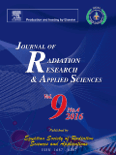
Journal of Radiation Research and Applied Sciences
Transforming understanding of radiation through rigorous scholarship.Journal of Radiation Research and Applied Sciences, published by ELSEVIER, is a premier open-access journal since 2013, dedicated to advancing the understanding and application of radiation research in various fields. With an ISSN of 1687-8507, this journal serves as a vital resource for researchers, professionals, and students engaged in the study of the physical and biological effects of radiation, radiation physics, and its applications in medicine and industry. Its rigorous peer-review process ensures the dissemination of high-quality research that meets the growing demands for innovative solutions in radiation science. By offering comprehensive access options, the journal promotes an inclusive approach to sharing knowledge with the global community. The Journal of Radiation Research and Applied Sciences stands out as a key platform for scholarly communication, fostering advancements that impact both theory and practice in the rapidly evolving landscape of radiation research.

Medical Dosimetry
Transforming Oncology with Innovative Dosimetry SolutionsMedical Dosimetry is a distinguished journal published by Elsevier Science Inc, dedicated to the advancing field of medical dosimetry and its applications within oncology, radiology, and nuclear medicine. With its ISSN 0958-3947 and E-ISSN 1873-4022, this journal serves as a crucial resource for researchers and professionals aiming to enhance their understanding of radiation treatment planning and dosage calculations. Encompassing a comprehensive range of topics from clinical dosimetry to technology assessment, Medical Dosimetry has been disseminating significant findings since its establishment in 1988, contributing to the continuous development of best practices in patient care and safety. The journal currently holds a Q3 ranking in various categories, reflecting its pivotal role in the research community, while not currently offering open access, it remains an essential reference for scholars advancing the techniques utilized in medical imaging and treatment. By fostering a platform for high-quality research, it aims to bridge the gap between theoretical studies and clinical applications, making it a vital addition to any medical library.
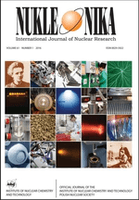
NUKLEONIKA
Unveiling the Mysteries of Matter and EnergyNUKLEONIKA, published by SCIENDO, is a leading open access journal that has been serving the scientific community since its establishment in 1968. Focused on the domains of Nuclear and High Energy Physics, Condensed Matter Physics, and Nuclear Energy and Engineering, this journal provides a platform for innovative research and technological advancements in a variety of interdisciplinary fields. With an impressive history of publications and a current Q3 ranking in several categories, including Safety, Risk, Reliability and Quality and Waste Management and Disposal, NUKLEONIKA is recognized for its significant contributions to scientific discourse. Open access since 2014, the journal ensures that all research outputs are freely available, facilitating broad dissemination and accessibility for researchers, professionals, and students alike. Located in the heart of Warsaw, Poland, NUKLEONIKA aims to inspire collaborative efforts and foster a deeper understanding of complex physical phenomena and their practical implications.
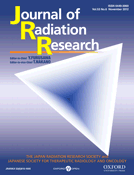
JOURNAL OF RADIATION RESEARCH
Pioneering insights into the complexities of radiation effects.JOURNAL OF RADIATION RESEARCH, published by Oxford University Press, is a prominent peer-reviewed journal focusing on the diverse fields of radiation science, including health, toxicology, and radiology. Since its inception in 1960, this open-access journal has provided a critical platform for the dissemination of high-quality research, making it accessible to a global audience of researchers, professionals, and students. With a consistent track record, the journal holds an impressive impact factor and is categorized in Q2 of Radiation studies and Q3 in Health and Toxicology as per the 2023 rankings, reflecting its influential role in shaping contemporary discourse in the field. The journal also boasts notable rankings within Scopus, further underscoring its importance in advancing knowledge and innovations related to radiation. Spanning from 1960 to 2024, the JOURNAL OF RADIATION RESEARCH remains at the forefront of scientific exploration and is essential reading for anyone committed to advancing the understanding of radiation and its effects.

Life Sciences in Space Research
Exploring the Frontiers of Life Beyond EarthLife Sciences in Space Research, published by ELSEVIER, is a leading journal dedicated to advancing the understanding of life sciences in the context of space exploration and extraterrestrial environments. With a focus on interdisciplinary research, the journal addresses critical topics spanning Agricultural and Biological Sciences, Astronomy and Astrophysics, Ecology, and Health, Toxicology and Mutagenesis. Established in 2014 and set to continue through 2024, it is recognized with a solid impact factor and impressive quartile rankings—including Q2 in several categories, reflecting its influential position among contemporary scientific discourse. The journal welcomes a diverse array of research articles that delve into the implications of space travel on biological systems, innovative ecological practices for sustained extraterrestrial habitation, and critical health-related issues associated with radiation exposure. Researchers, professionals, and students will find Life Sciences in Space Research an invaluable resource for cutting-edge insights and developments in the rapidly evolving field of astrobiology and space science. For more information, please access the journal through its designated platform.